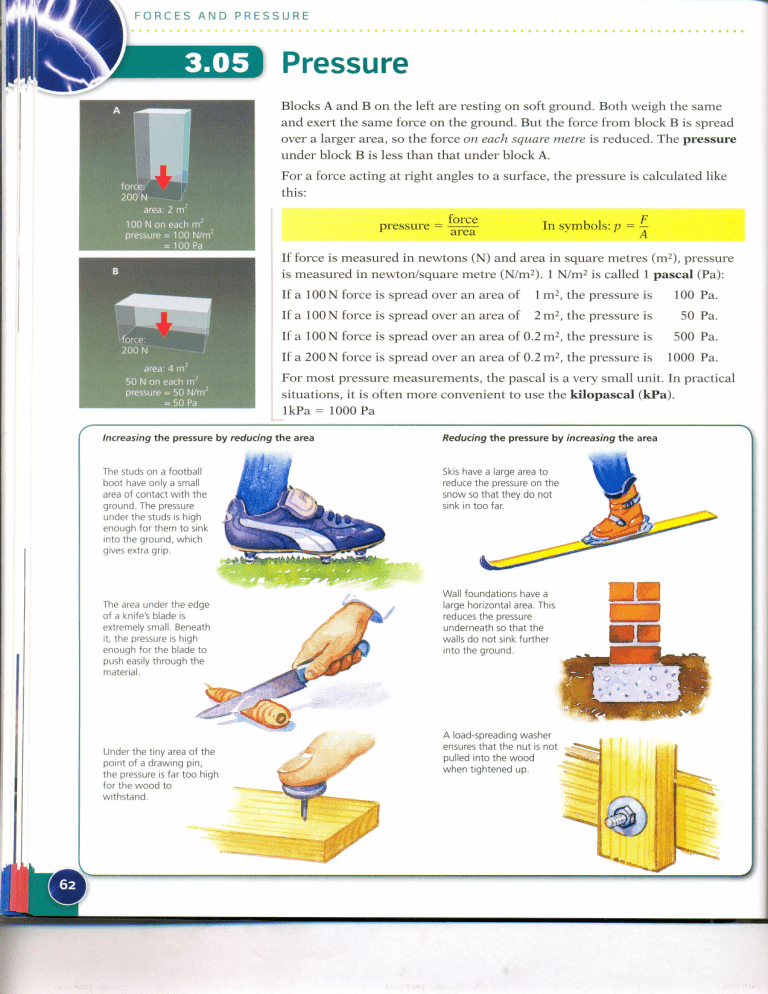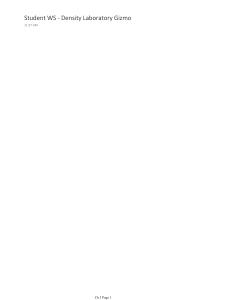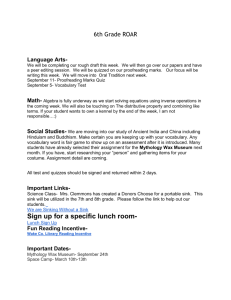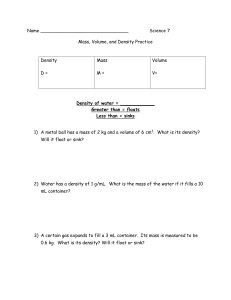
FORCES AND PRESSURE Pressure Blocks A and B on the left are resting on soft ground. Both weigh the same and exert the same force on the ground. But the force from block B is spread over a larger area, so the force on each square metre is reduced. The pressure under block B is less than that under block A. For a force acting at right angles to a surface, the pressure is calculated like this: pressure = f~;~: In symbols: p = ~ If force is measured in newtons (N) and area in square metres (m-), pressure is measured in newton/square metre (N/m2). 1 N/m2 is called 1 pascal (Pa): If a lOONforce is spread over an area of 1m-, the pressure is 100 Pa. If a 100N force is spread over an area of 2 m-, the pressure is 50 Pa. If a 100N force is spread over an area of 0.2 m-, the pressure is 500 Pa. If a 200 N force is spread over an area of 0.2 m-, the pressure is 1000 Pa. For most pressure measurements, the pascal is a very small unit. In practical situations, it is often more convenient to use the kilopascal (kPa). 1kPa = 1000 Pa Increasing the pressure by reducing the area Reducing the pressure by increasing The studs on a football boot have only a small area of contact with the ground. The pressure under the studs is high enough for them to sink into the ground, which gives extra grip Skis have a large area to reduce the pressure on the snow so that they do not sink in too far. The area under the edge of a knife's blade is extremely small. Beneath it, the pressure is high enough for the blade to push easily through the material. Under the tiny area of the point of a drawing pin, the pressure is far too high for the wood to withstand. / Wall foundations have a large horizontal area. This reduces the pressure underneath so that the walls do not sink further into the ground. A load-spreading washer ensures that the nut is not pulled into the wood when tightened up. the area





